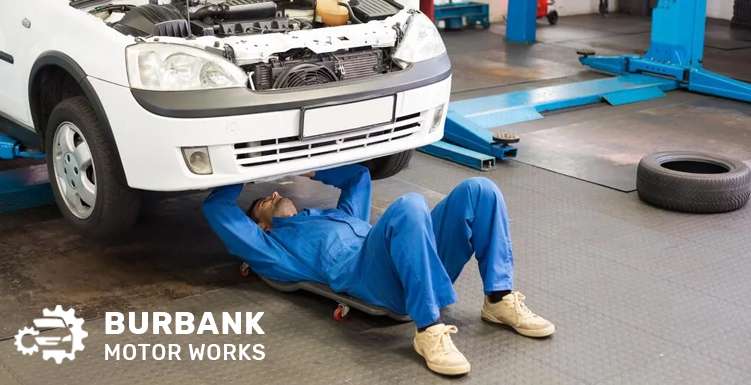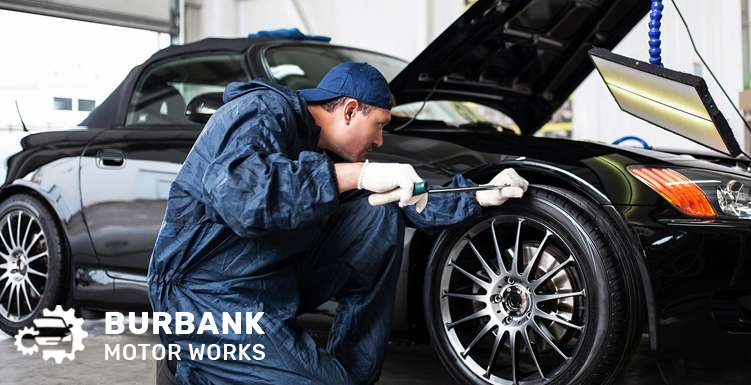
Address: 2208 W Burbank Blvd, Burbank, CA 91506

Mon - Fri: 7:45 Am - 5:30 Pm
Sat: 8:00 Am - 2:30 Pm
Sun: Closed

Address: 2208 W Burbank Blvd, Burbank, CA 91506

Mon - Fri: 7:45 Am - 5:30 Pm
Sat: 8:00 Am - 2:30 Pm
Sun: Closed
Auto collisions are an unfortunate reality in the bustling city of Burbank. Understanding the intricacies of auto collision repair can mean the difference between a quick fix and a time-consuming ordeal. From minor fender-benders to major collisions, every situation demands different repair strategies.
The repair process involves assessing and getting insurance approval for damage. The vehicle is disassembled to uncover hidden damage, followed by ordering replacement parts. Body and structural repairs fix dents and any structural damage. The car is painted to match the original color, polished for a smooth finish, reassembled, and detailed. Minor damage costs around $50 to $500, while significant damage, such as frame or engine repairs, can cost $2,000 to $10,000 or more.
Here, we aim to equip you with the knowledge to navigate the complexities of collision repair. We’ll explore everything from understanding the damage to choosing the right repair shop to ensuring quality repair work.

Conducting auto body repair primarily revolves around restoring a vehicle to its pre-collision condition, ensuring safety aesthetics, and maintaining its value. After a collision, structural damages may occur that can compromise the integrity of the vehicle. A professional repair not only rectifies visible issues like dents or scrapes but also addresses internal injuries that may affect the car’s functioning.
Additionally, effective auto body repair aims to preserve the vehicle’s aesthetics and curb appeal, which could be crucial when considering resale. Lastly, proper repair work can help maintain the vehicle’s value, ensuring you get the best return if you decide to sell.
The journey towards a successful auto collision repair in Burbank begins at the accident scene. First and foremost, ensure all parties’ safety, moving off the road and calling emergency brake services if necessary. Document the state of your vehicle post-collision, using photographs to capture the extent and details of the damage. The photos will serve as vital evidence when dealing with insurance companies and repair shops.
In the aftermath of an accident, it’s easy to overlook minor details that could later affect the repair process. Hence, it’s essential to note down comprehensive information about the incident, including the date, time, location, and a brief event description.
Collect contact details of any witnesses present, as their testimonies could help provide a clear account of the incident. Finally, contact your insurance company to report the accident and initiate the claim process. It’s the first step to getting your car repaired at a reputable Burbank auto collision repair center.
Handling an auto collision incident with composure and thoroughness lays the groundwork for a smoother, more efficient repair process.
The jarring impact of a car accident can leave a lasting mark on the vehicle involved and the lives of those affected. While the emotional and psychological scars may take time to heal, the physical damage to the car often demands immediate attention. Understanding the common types of auto collision repair in Burbank can help you assess the extent of the damage, make informed decisions about repairs, and ensure the safety of your vehicle and passengers.
Front-end collisions account for most auto accidents, where the front of one vehicle collides with the front of another. These collisions can occur at varying speeds, resulting in a range of damage. Common damage from front-end collisions includes:
Rear-end collisions, where one vehicle strikes the rear of another, are another common type of auto accident, often caused by tailgating or distracted driving. The damage from rear-end collisions can vary depending on the speed differential between the vehicles involved. Common damage from rear-end collisions includes:
Side-impact collisions, where the side of one vehicle strikes the side of another, can be hazardous due to the exposed nature of the occupants. These collisions often occur at intersections or when cars change lanes abruptly. Common damage from side-impact collisions includes:
The auto collision repair process is comprehensive, involving detailed steps that ensure your vehicle gets back on the road in optimal condition. It is essential to understand these steps to have clear expectations and to ensure the repair work is thorough. Here are the key stages involved in the auto collision repair Burbank process:
Remember, choosing a quality service centre like Burbank Motor Works ensures your vehicle receives excellent care and attention during this repair process.
Estimating the cost of repairing auto collision damage can vary depending on the severity of the damage, the type of vehicle involved, and the labor rates in your area. However, some general guidelines can help you get a rough idea of the cost.
You can expect to pay anywhere from $50 to $500 for minor damage, such as small dents or scratches. For more moderate damage, such as bumper repairs or cracked headlights, you can expect to pay anywhere from $500 to $2,000. You can expect to pay anywhere from $2,000 to $10,000 for significant damage, such as frame or engine damage.
Don’t let collision damage keep you off the road for long. Schedule your appointment today, or if you have questions about our services, feel free to contact us at 818-848-1656.

While some collisions are unavoidable, drivers can take plenty of measures to minimize their chances of being involved in an accident. Here are a few preventative measures you can follow:
By following these preventative measures, you can help ensure your safety and the safety of others on the road.
Auto collisions are an unfortunate reality for many drivers. They can cause significant damage to vehicles and threaten the safety of drivers and passengers. However, you can be better prepared to handle these situations by understanding the different types of collisions, the repair process, and preventative measures. Remember to choose a trusted motor service center like Burbank Motor Works for quality repairs and maintenance to keep your vehicle in top condition and reduce the risk of accidents.
Call us for booking an early appointment and get all your car related problems solved by our experts.